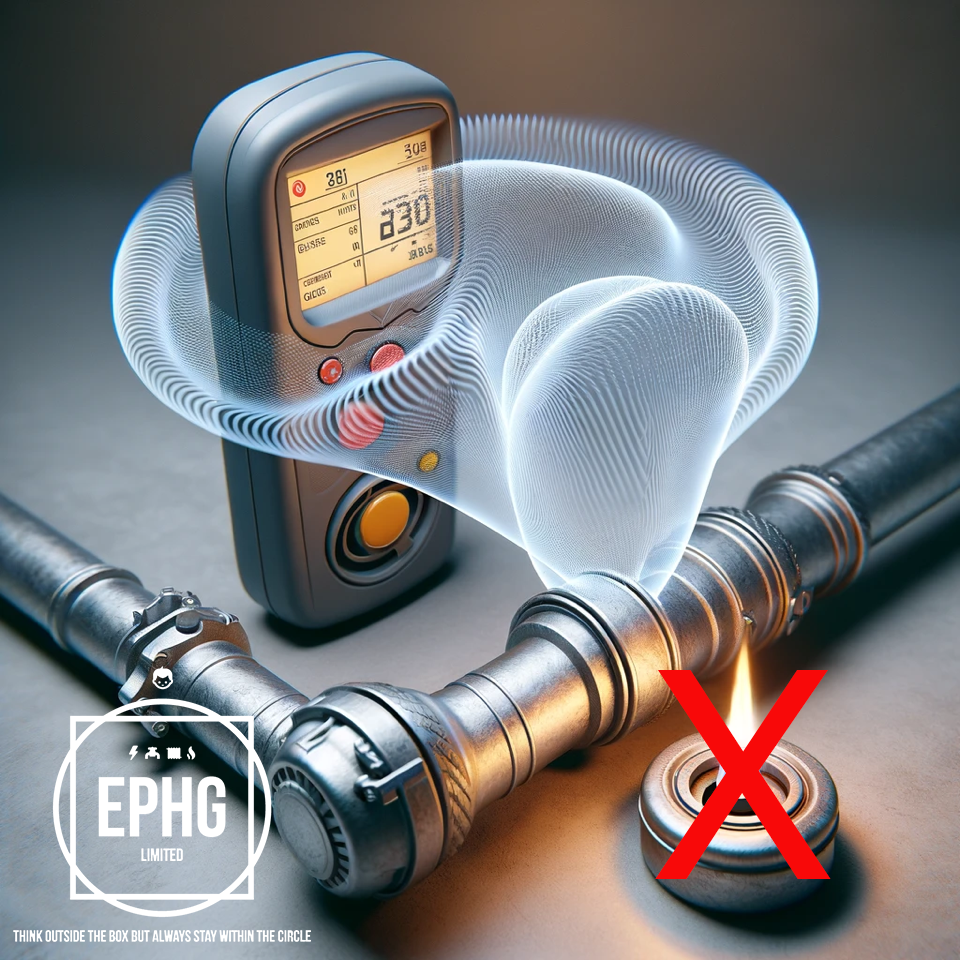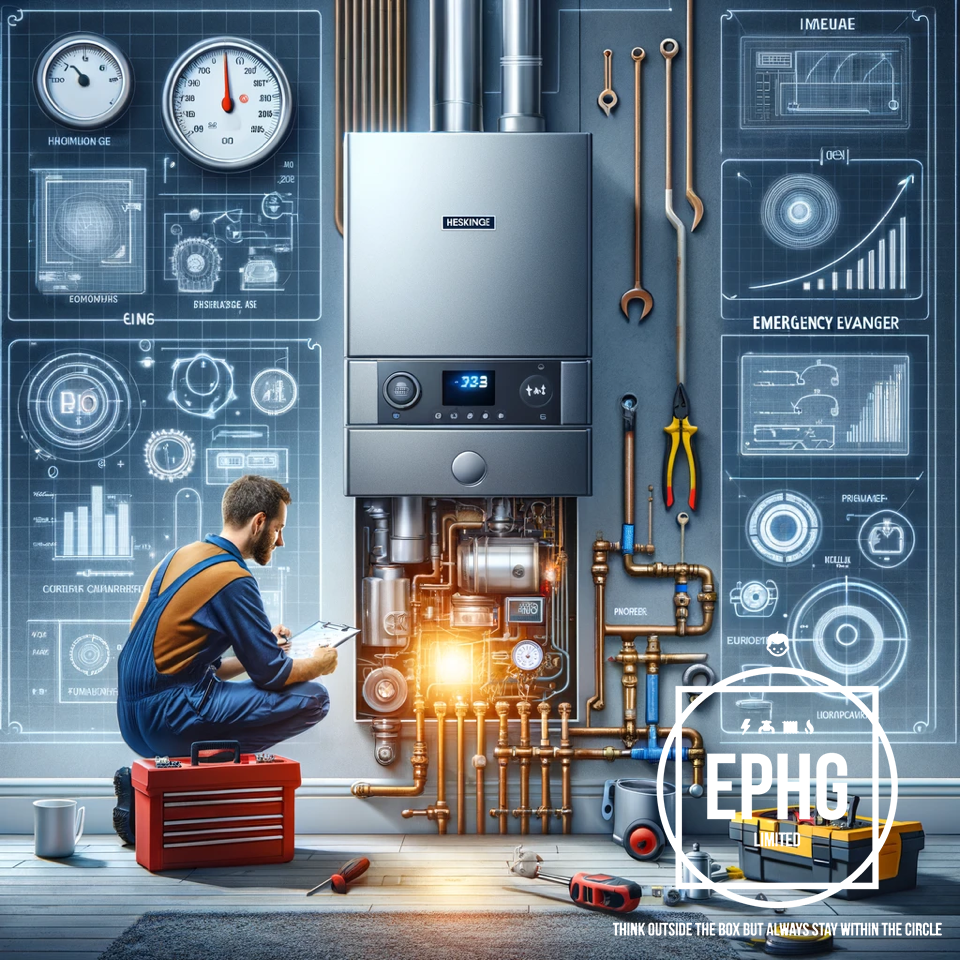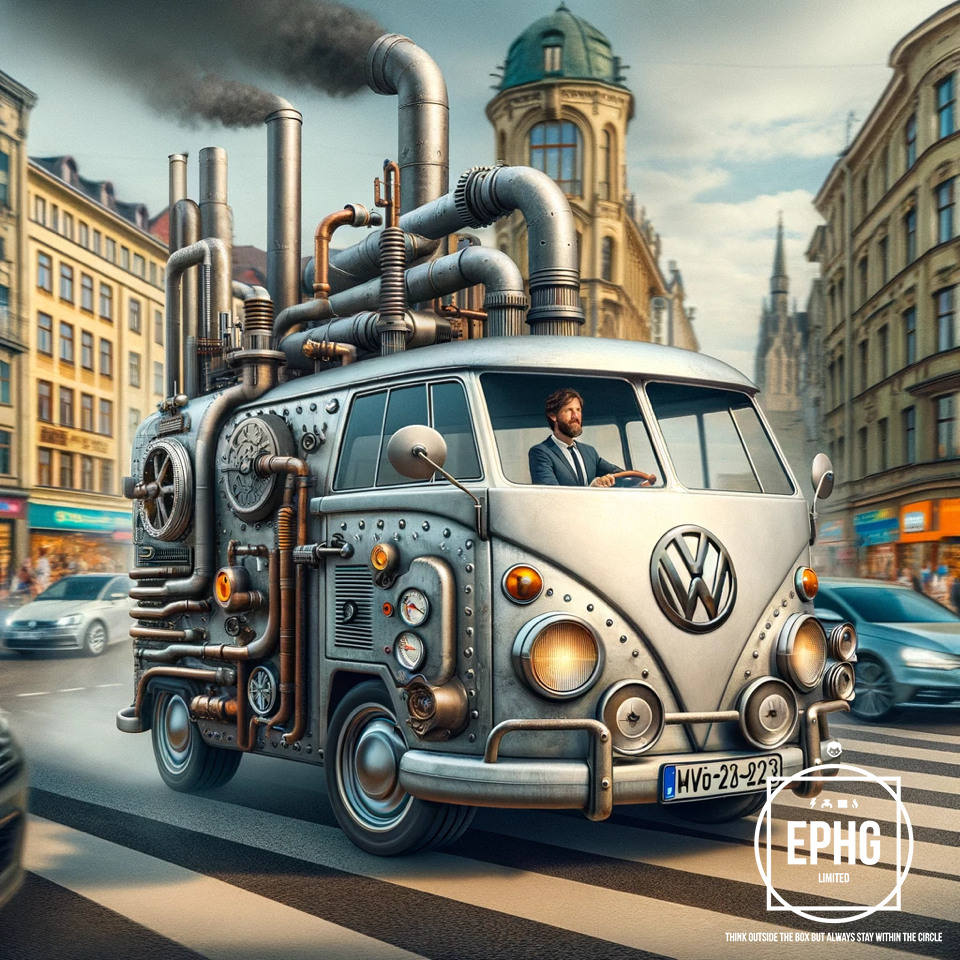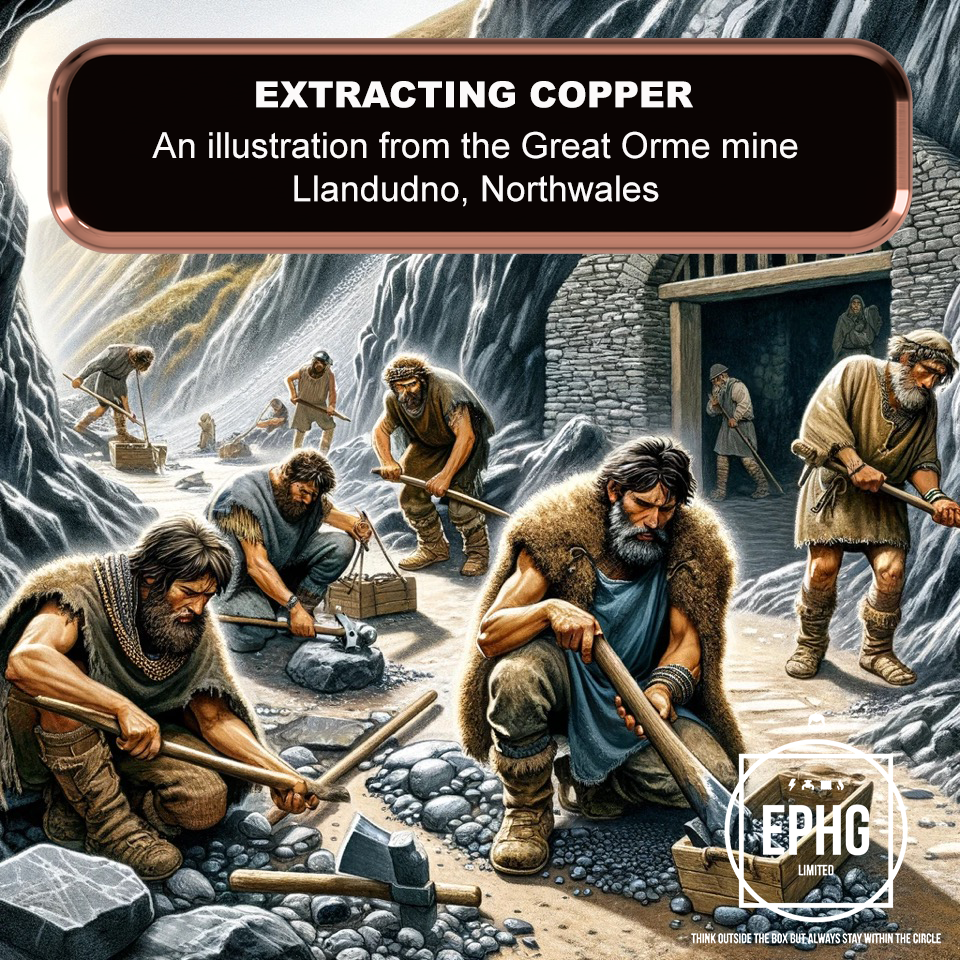
Bronze Age Miners
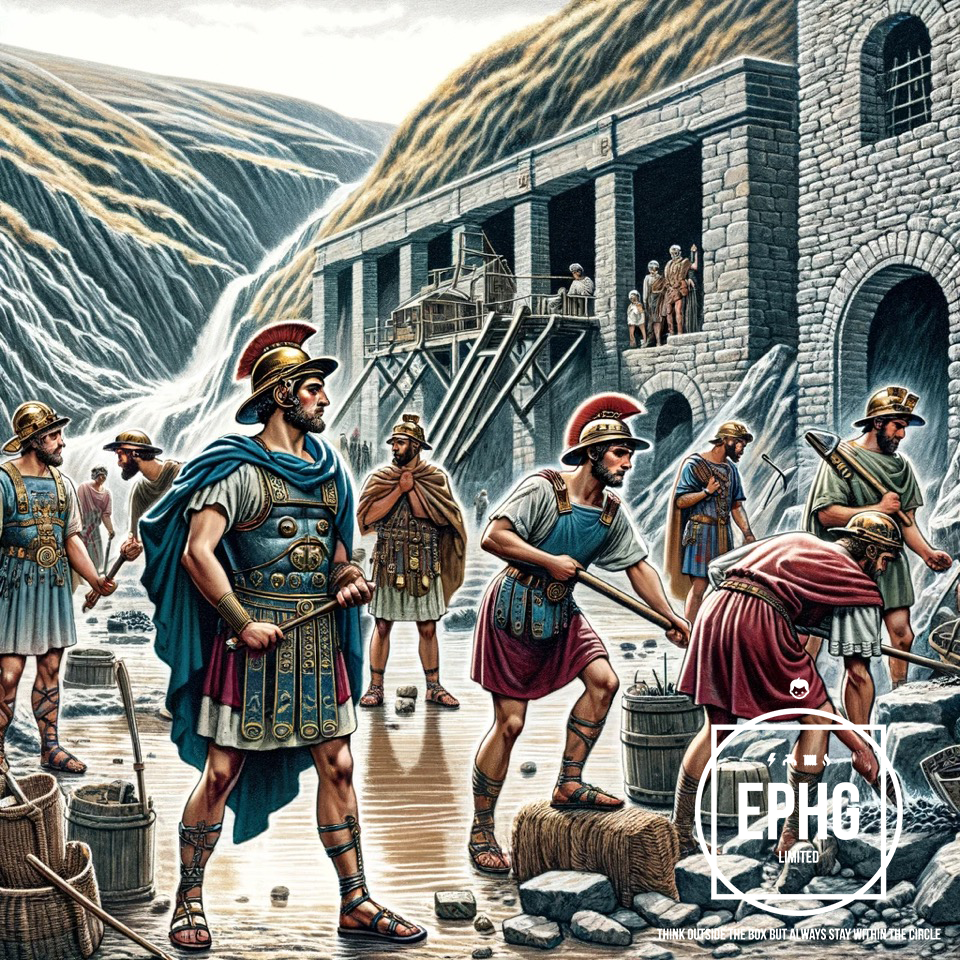
Some say it was the Romans that mined in Great Orme

What we expect to see in the present day of mining
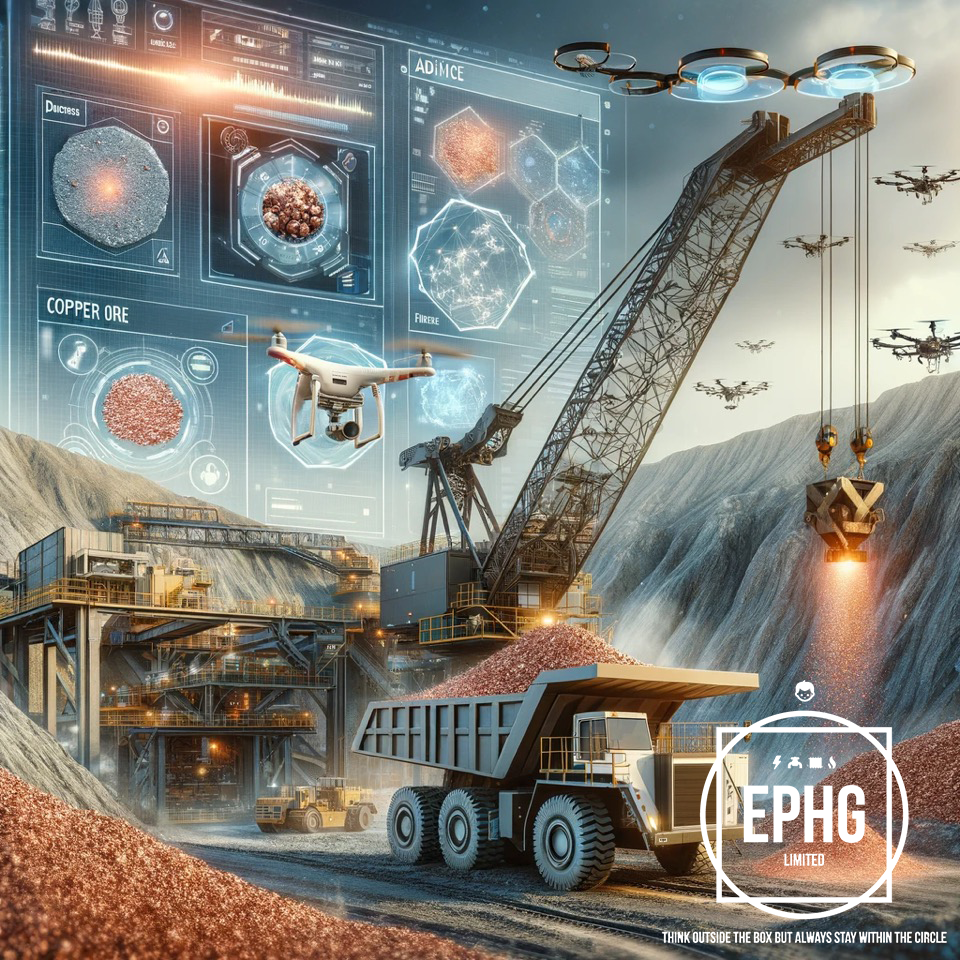
What could the future of mining bring us?
The Copper Ore Journey: From Ground to Global Markets
Copper mining is a vital part of the global economy, providing essential materials for construction, electronics, and renewable energy. The process from extraction to final product involves several stages, including mining, milling, smelting, and refining. One of the oldest known mines, the Great Orme in Llandudno, offers a unique glimpse into ancient mining techniques and the enduring importance of copper.
Located in North Wales, the Great Orme mine is a testament to the long history of human ingenuity in the quest for valuable resources. Archaeological evidence suggests that mining activities at Great Orme date back over 4,000 years, making it one of the most significant prehistoric mining sites in Europe. The mine's extensive network of tunnels and large quantities of extracted copper ore highlight the advanced nature of Bronze Age mining and metallurgy.
The people who mined copper from Great Orme during this time were part of the early Bronze Age society.
These ancient miners employed stone and bone tools to extract copper ore, demonstrating remarkable ingenuity and effort. The copper extracted from the Great Orme mines was likely used to make bronze, an alloy of copper and tin, which was a significant advancement in material technology during the Bronze Age. Bronze was used for a wide variety of purposes, including the creation of weapons, tools, jewelry, and other artifacts, marking a significant step forward in the development of human civilization.
The mining techniques used by these ancient peoples were quite sophisticated for their time. They dug out shallow pits and deeper shafts and tunnels to follow the ore veins, using fire-setting (heating the rock and then quenching it with water to fracture it) and stone hammers to break the ore from the rock. The ore was then processed to extract the copper, which required smelting it in a furnace to remove impurities.
Archaeological excavations at Great Orme have uncovered extensive evidence of these ancient mining activities, including tools, remnants of ore and slag from the smelting process, and the complex network of tunnels and shafts. These findings suggest that the Great Orme mines were a significant source of copper during the Bronze Age and highlight the advanced technological and organizational skills of the people who worked them.
The historical record on the precise extent of Roman mining activity in Great Orme, Llandudno, is not entirely clear, but there is evidence to suggest that the Romans were aware of and likely exploited the copper resources in the area. Archaeological findings, including Roman artifacts and mining tools, indicate some level of Roman involvement or interest in the copper mines at Great Orme.
Great Orme's extensive prehistoric and later mining operations were well established by the time of the Roman occupation of Britain, and it's reasonable to assume that the Romans, known for their mining expertise and demand for copper for various uses, would have utilized such a significant resource. Copper was a valuable material in the Roman Empire, used for coinage, bronze, and other purposes, making it likely that the Romans would have been interested in the rich copper deposits at Great Orme.
However, the most extensive and clearly documented mining activities at Great Orme date back to the Bronze Age, much earlier than the Roman period. The scale of Roman mining and the exact details of their operations in Llandudno remain subjects of ongoing research and archaeological investigation.
Today, the mining industry continues to evolve with advancements in technology and sustainability practices. However, the legacy of ancient mines like Great Orme serves as a reminder of the timeless value of copper and the continuous human effort to harness its properties. As we move towards a more sustainable future, the lessons learned from the past and the innovations of the present will guide the development of more efficient and environmentally friendly mining methods.
The Present of Copper Mining
In the present day, copper mining is characterized by its technological advancements and sustainability efforts. Modern mines use sophisticated equipment and techniques to extract copper ore efficiently and safely. The industry is also moving towards more sustainable practices, including water recycling, renewable energy usage, and restoration of mined lands. These efforts aim to reduce the environmental impact of mining activities and ensure the longevity of copper resources for future generations.
Current copper mining operations are spread across the world, with significant producers including Chile, China, Peru, the United States, and Congo. The demand for copper continues to rise, driven by its essential role in electrical wiring, plumbing, renewable energy systems, and electric vehicles. This growing demand puts pressure on the industry to increase efficiency and sustainability in mining operations.
We have another great article about 'Where Does Copper Come From and Why Does It Degrade', which is a great read and also includes a video.
The Future of Copper Mining
The future of copper mining looks promising, with several key trends shaping its trajectory. Firstly, the transition towards green energy and electric vehicles is expected to significantly increase the demand for copper. This is because copper is a critical component in renewable energy systems, such as solar panels, wind turbines, and batteries for electric vehicles. As the world moves towards a more sustainable energy future, the role of copper becomes increasingly important.
Technological advancements will also play a crucial role in the future of copper mining. Innovations in mining technology, such as automation, artificial intelligence, and remote operations, are expected to improve efficiency and safety in copper extraction. Moreover, advances in ore processing technologies will enable the extraction of copper from lower-grade ores, thus extending the life of copper mines.
Another significant aspect of the future of copper mining is the focus on circular economy principles. Recycling copper from used products and waste materials is becoming an increasingly important part of the copper supply chain. This not only helps to meet the growing demand for copper but also reduces the environmental impact of mining by lowering the need for raw ore extraction.
In conclusion, the copper mining industry stands at the crossroads of tradition and innovation. While it continues to build on the legacy of ancient mines like Great Orme, it also embraces new technologies and sustainability practices to meet the challenges of the 21st century. The future of copper mining is not just about extracting a valuable resource from the earth; it's about doing so in a way that benefits both the planet and its people.



